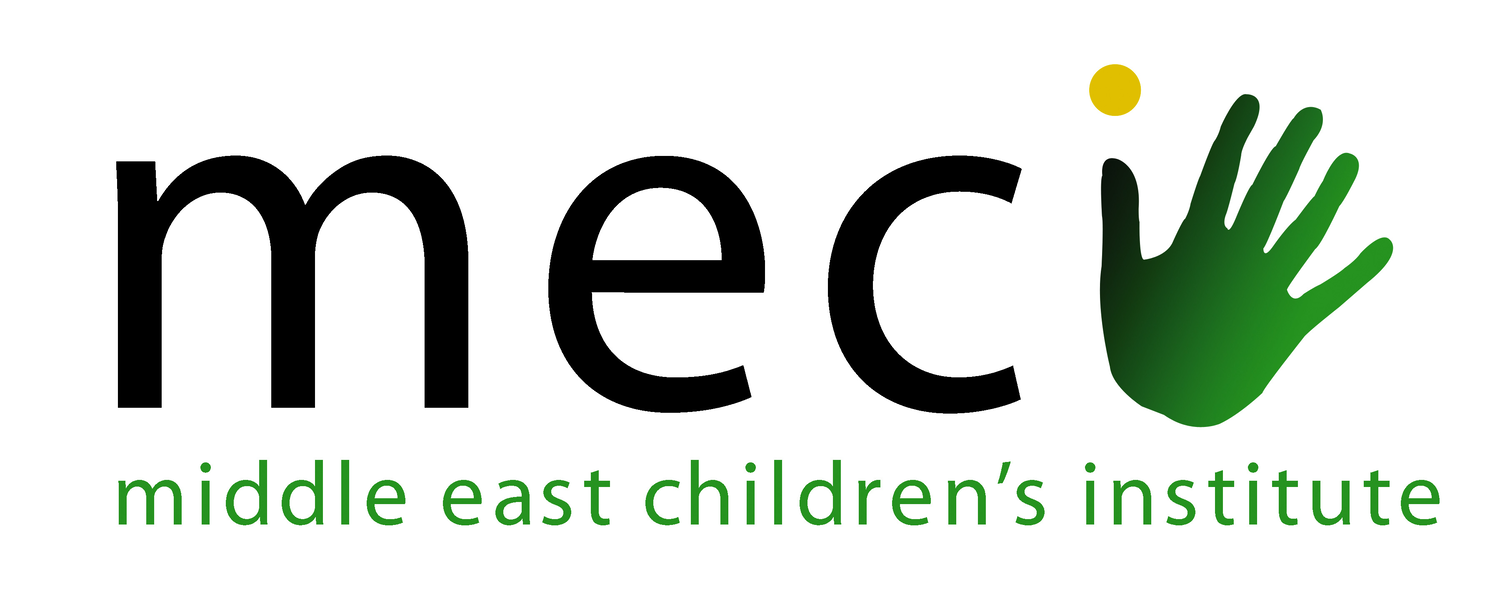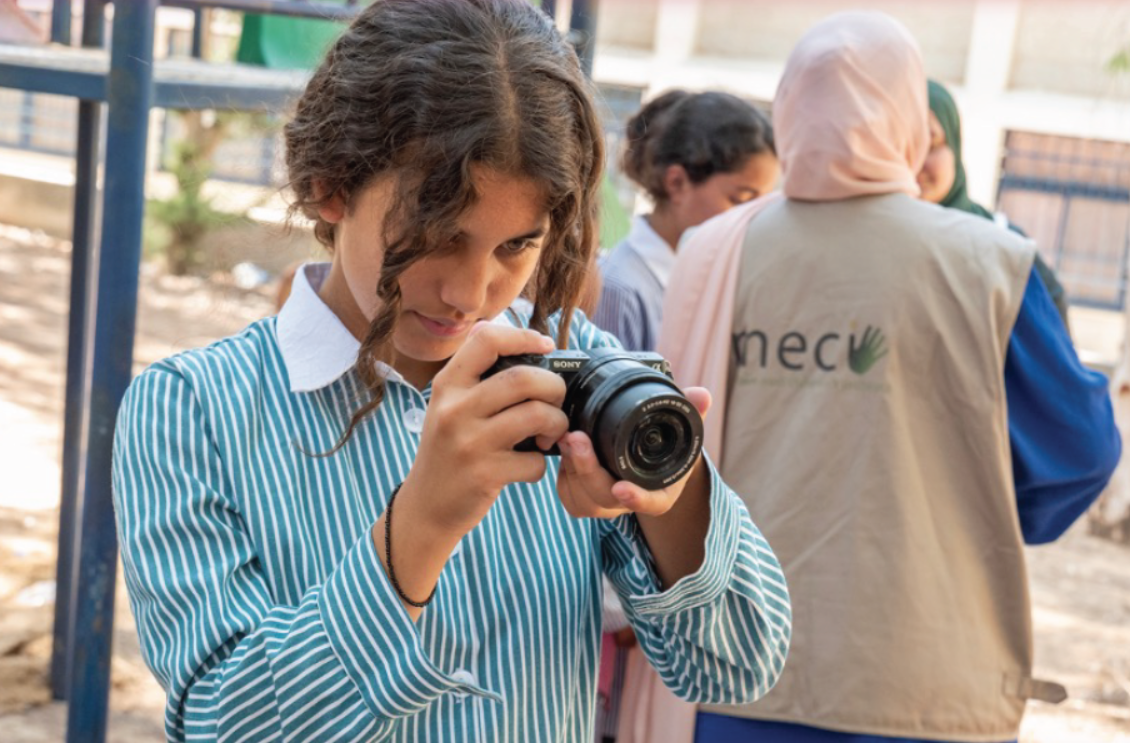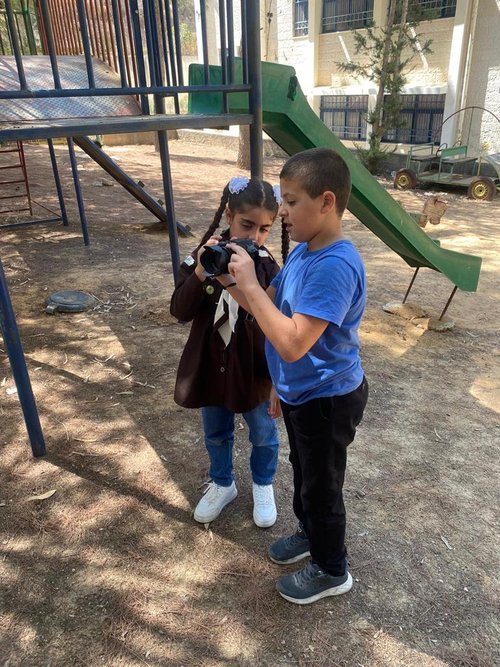In MECI Photography Project, Students Capture Home
It’s not just a door, or even a beautiful one, Adam explained. For the 11-year-old from the West Bank, the photo he took of the entrance to his childhood home reflects the richness of Palestinian culture — its oldness, which he loves. “I live in a modern house now, but I really miss the old one. I wish I could go back.”
This fall, Adam was one of thirty students from Beit Rima and Deir Ghassaneh, rural communities northwest of Ramallah, who participated in a photography project with the Middle East Children’s Institute (MECI). Part of MECI’s after-school program, the initiative allowed a cohort of aspiring photographers, between nine and 16-years-old, to learn the fundamentals of camerawork and begin honing their crafts under an expert’s guidance.
With visions of Palestine so often dominated by violence, the photos taken by children in the MECI program tell another story. Theirs is a fuller picture of life in the rural West Bank—its natural beauty, beloved traditions, and ancient histories—influenced by their experience under occupation but not reduced to it. While allowing students to discover a new skill, the MECI project, at heart, sought to help them explore and express themselves.
In September, 2023, the program kicked off with a visit from project-partner and Geneva-based photographer, Gregory Maillot. In Beit Rima and Deir Ghassaneh, Maillot led the eager students in lessons he designed to teach them the technical basics and then facilitate guided, but unrestricted, experimenting. For the vast majority of students, the course presented their first opportunity to hold a camera.
Sixteen-year-old Janna said she had enjoyed taking pictures from a young age but never been able to formally pursue photography until the MECI program. From Gregory, she learned to think critically about each shot. Although his assignments remained open-ended, he clarified not just anything makes a good subject for a photograph. “He taught us that meaning is in the details,” she said.
For Janna, meaning dwelled, among other places, in the eyes of the family members she loves. Taking close-up photos of half her grandmother and sister’s faces, she said she wanted to capture the differences between old and young. She also zoomed in on those unique features, perhaps invisible to most, that make each woman so special.
Of her sister’s picture, Janna wrote “My favorite person in my family, the keeper of my secrets… Her eyes tell the most beautiful stories.” Of her grandmother, she added, “The ideal grandmother... her face's noble wrinkles... her wonderful laugh.”
In addition to their loved-ones, MECI students identified significance in a variety of other people, places, and moments. Thirteen-year-old Saba photographed her morning breakfast, whose foods, like za’atar, olive oil, and tomatoes, she said are native to Palestine and culturally important. Fourteen-year-old Kinan preferred taking pictures of nature, where he said he sees his home reflected most. For the perfect shot of a bird in a tree, he waited patiently, exhausted, walking and listening to chirps and trills fill the air.
With the photo-taking stage of the project complete, MECI has started sharing the students’ hard work, widely and proudly. On November 21, an exhibition, “Young Eyes from Palestine,” featuring 40 photos, opened at Espace Diorama gallery in Geneva. Selected by a jury, these images will remain on display in Switzerland until December 17, as well as for sale as limited edition prints in-person at the exhibition and online on MECI’s site.
All proceeds from the photos go towards MECI’s work on behalf of hundreds of young people, who need support more than ever. MECI remains dedicated to ensuring all children in the area continue to receive an education, even in the face of school closures. The team also provides the psychological and medical resources students so desperately need to cope.
Right now, contributions to MECI and the photography project could help push the current reality towards one the children’s photos show is possible, lacking violence and yearning for peace.
Of his photo of a blue sky speckled with soft, white clouds, 11-year-old Adam said, “It feels like freedom, like flying, living without any walls or anything to capture or stop me.”



